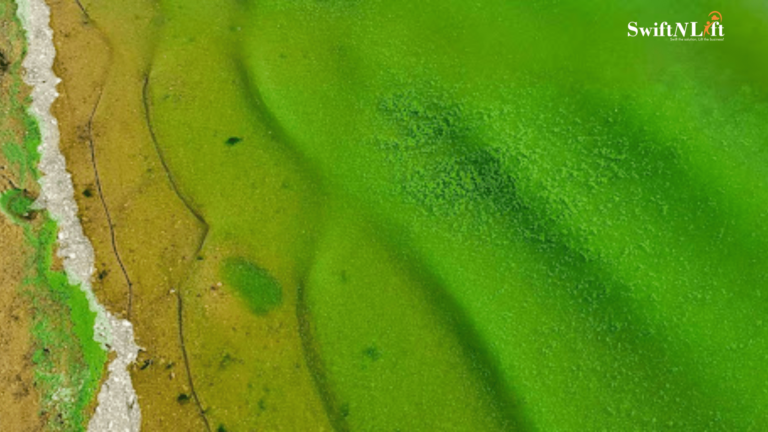
“Turning the Tide on Eutrophication: Let’s Unite for Cleaner Waters and Healthier Ecosystems 🌊💚 #EutroFreeFuture”
Eutrophication, a term that might not roll off the tongue easily, holds significant implications for the health of our planet’s water bodies. In recent years, the issue of eutrophication has gained attention due to its far-reaching ecological and environmental consequences. This article will delve into the intricate world of eutrophication, exploring its causes, impacts, and the crucial measures needed to address this complex environmental problem.
Understanding Eutrophication
Eutrophication is a process by which a water body, such as a lake, river, or coastal area, becomes enriched with excessive nutrients, primarily nitrogen and phosphorus. These nutrients serve as the building blocks for aquatic plant and algae growth. In a balanced ecosystem, the presence of these nutrients is essential for sustaining life. However, when these nutrients become overly abundant, they trigger a series of events that lead to a cascade of environmental issues.
Causes of Eutrophication
- Agricultural Runoff: One of the leading causes of eutrophication is the runoff of fertilizers from agricultural fields. These fertilizers, rich in nitrogen and phosphorus, enter water bodies through rainwater and irrigation, fueling algal blooms.
- Urbanization: Urban areas contribute to eutrophication through the discharge of sewage and wastewater into water bodies, containing high nutrient concentrations. Stormwater runoff from roads and rooftops also transports pollutants into aquatic systems.
- Industrial Discharges: Industries release pollutants into water bodies, including nutrients from industrial processes, which can exacerbate eutrophication.
- Deforestation: The removal of forests near water bodies can increase soil erosion, delivering more nutrients into the water.
- Climate Change: Altered weather patterns and rising temperatures can influence nutrient cycling in aquatic ecosystems, potentially exacerbating eutrophication.
Impacts of Eutrophication
- Algal Blooms: Excessive nutrients trigger rapid growth of algae and phytoplankton, leading to algal blooms. These blooms can create thick mats on the water surface, blocking sunlight and depleting oxygen, which can lead to fish kills.
- Oxygen Depletion: As algae die and decompose, bacteria consume oxygen during the decomposition process, leading to hypoxic (low oxygen) or anoxic (no oxygen) conditions in water bodies, known as “dead zones.”
- Loss of Biodiversity: Eutrophication can disrupt the natural balance of aquatic ecosystems, leading to declines in native species and favoring the growth of nuisance species.
- Impaired Water Quality: Water bodies affected by eutrophication often suffer from poor water quality, including foul odors, murky water, and an increase in harmful toxins produced by some algal species.
- Economic Impact: Eutrophication can have substantial economic consequences, affecting fisheries, recreational activities, and property values near affected water bodies.
Addressing Eutrophication
Addressing eutrophication is a multifaceted challenge that requires coordinated efforts at local, regional, and global levels. Here are some key strategies and measures to combat excessive nutrient pollution:
- Nutrient Management: Implementing responsible agricultural practices, such as precision farming and reduced fertilizer use, can help minimize nutrient runoff.
- Wastewater Treatment: Upgrading and expanding wastewater treatment facilities in urban areas to remove nutrients before discharge into water bodies is essential.
- Buffer Zones: Establishing vegetative buffer zones along water bodies can help filter out nutrients from stormwater runoff.
- Regulatory Measures: Enforcing strict regulations on nutrient discharges from industries and agriculture is critical for controlling nutrient pollution.
- Riparian Restoration: Restoring and protecting riparian areas (the interface between land and water) can help reduce nutrient inputs and provide habitat for native species.
- Public Awareness: Educating the public about the importance of reducing nutrient pollution and adopting sustainable practices is essential.
- Climate Mitigation: Addressing climate change through emissions reduction can indirectly help reduce the intensity of eutrophication.
Eutrophication is a complex and pressing environmental issue that affects ecosystems, water quality, and human well-being. To safeguard our water bodies and the life they support, we must take decisive actions to reduce nutrient pollution at its source. By implementing responsible agricultural practices, improving wastewater treatment, and fostering public awareness, we can mitigate the impacts of eutrophication and restore the health of our aquatic ecosystems. The future of our water bodies depends on our collective commitment to addressing this critical environmental challenge, ensuring that they remain vibrant and sustainable for generations to come.
– Kaumodaki Lonkar



